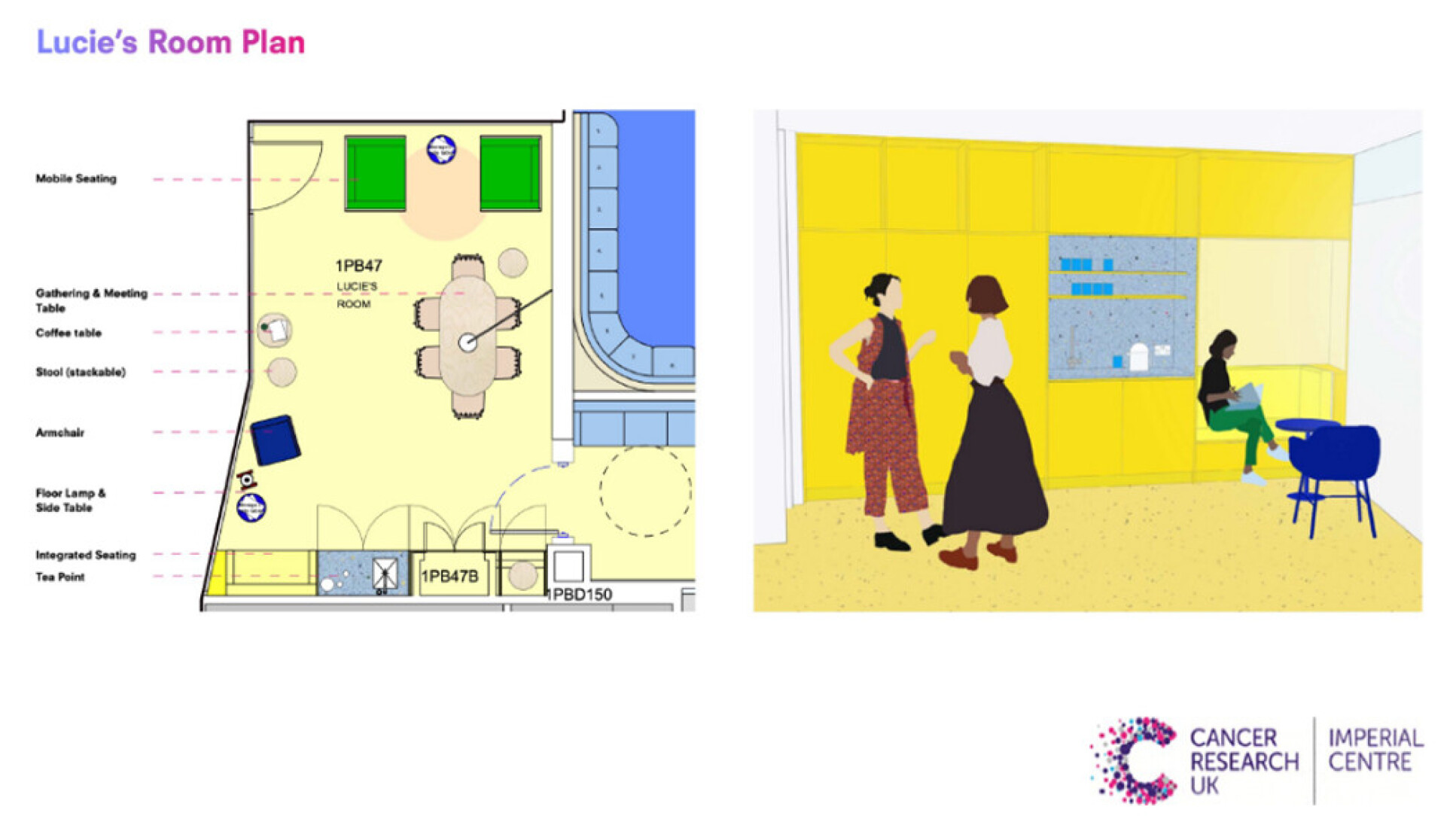Innovative new Imperial Breast Unit designed to support patient journey
At Charing Cross Hospital in London, a state-of-the-art breast unit was recently unveiled.
The design of this new facility marks a step change in patient care and innovation in healthcare and stemmed from a student-led project.
Students on the Healthcare and Design MSc delivered by Imperial College London’s Institute of Global Health Innovation and the Royal College of Art (RCA) were the instigators of the design.
The postgraduate students mapped patient’s physical and emotional journeys through the Unit, and a staff project developed the creative installation which responds to patient needs.
Mr Daniel Leff, consultant breast surgeon at Imperial College Healthcare NHS Trust and programme lead for the MSc Healthcare and Design, who led the team of designers, clinicians and patients on this project said: "I'm delighted to see such a significant outcome of student work, and a positive change for the patients."
The Royal College of Art team were who realised the designs included Ashley Hall, Professor of Design Innovation at the RCA and Anna Wojdecka, a Designer and Research Associate at the Helen Hamlyn Centre for Design in the Healthcare Lab and an Innovation RCA Fellow, who is a tutor on the Healthcare and Design programme.
Human centred design
The aim of the student projects was to improve the patient experience at the Imperial Breast Unit.
“For this project, we embedded students in the breast unit to discover the potential challenges there with respect to patient experience. After the field trips our students identified several major challenges including the need to improve the environment in which patients receive a cancer diagnosis and the way in which the patients flow through the unit,” said Mr Leff.
The challenges patients experienced with layout which exacerbated anxieties with the waiting room and after receipt of bad news at the Charing Cross Hospital breast unit spurred healthcare designers to develop a new architectural design for breast screening participants, ensuring a more positive experience during hospital visits for breast cancer checks.

The new design included concepts of empathy, a one-way system for patients entering and exiting the unit, and more domestic and less clinical space to help patients stay calm, and giving them time and space to process emotions.
"Students provided the course team with their very detailed patient feedback and qualitative research findings. They presented their findings to the external examiners, the Imperial charity, unit managers, and other key unit staff and brainstormed solutions," explained Mr Daniel Leff.
Healing architecture
As patients and staff approach the breast screening unit, they notice a dynamic art installation of soothing light reflections, which bathes the waiting room in calming patterns.

The artwork, designed by light artist, Chris Wood, supports a positive distraction to reduce stress in the unit, and has a calming effect for patients and staff.
Beyond the waiting room is a calm space, which patients can move through or sit and have a cup of tea before exiting the unit, without having to return through the waiting room.

The unit has been planned to create an environment that maximises healing and makes the most of the understanding of the patient journey and needs of staff.
Patients had fed back that after receiving bad news they did not want to face strangers in the waiting room, and felt they wanted to protect other people from further anxiety. One patient said “I don’t want to cry in front of people… I need to hold it together”. So, the Unit was designed to include a pathway that means patients can exit the unit through a calm space, rather than heading back out through the waiting room. The Unit is also equipped with a kitchen facility and comfortable seating, for patients and those accompanying them to their appointment to sit together.
The final interior architecture was completed by Ab Rogers, former Head of Programme for Interior Design MA, in the School of Architecture.
Innovative Education
Imperial College London’s Healthcare and Design MSc – co-delivered with the Royal College of Art – trains students to lead innovation in healthcare systems, services and spaces. By developing an understanding of challenges to the (UK) health system, students explore how to design with a view to maximising impact and developing sustainable outputs.
Leila Shepherd, Director, Helix Centre, said: "We are so proud to be teaching students to use human-centred design methods in a healthcare context. It is only by putting people at the heart of product and service design that we can truly improve patient outcomes and experiences. Through this MSc programme, we are educating future leaders in this field, which has tremendous potential for positive impact on patients and citizens.”
To date, students have designed a range of creative outputs through their research projects for the Healthcare and Design MSc, as part of the Helix-led Design Dash module. For example interventions to support patient safety during operating procedures, and public campaigns to address low breast screening uptake. Matrix, a cervical assessment tool designed by Healthcare and Design alumnus Stiliyana Minkovska, was recognised with by winning the top prize in Imperial’s entrepreneurship programme, WE Innovate.
With thanks to individuals involved in the Charing Cross Breast Unit Redesign project: Daniel Leff, Ashley Hall, Anna Wojdecka, Lenny Naar, Madeline Maxwell, Ivor Williams, Daniel Dickens, Luke Pratsides, Bellanoush Tavana-Tirani, Jonny Sullivan, Lindsay D'Arcy, Pip Batey, Oonagh Comerford, Caroline Potts, Tim Allan, Annie McKirdy, Elaine Finn, William Wang, Michael Wood, James Turner, Deborah Cunningham.
Find out more or apply for the Healthcare and Design MSc

Article text (excluding photos or graphics) © Imperial College London.
Photos and graphics subject to third party copyright used with permission or © Imperial College London.